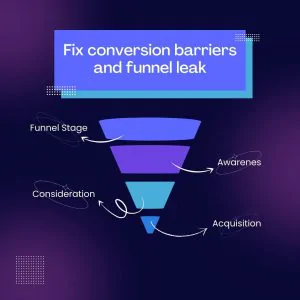11 Foolproof Ways to Generate Leads for SaaS Businesses
Software as a service, otherwise known as SaaS, is an intangible product – one made up entirely of binary code, and only accessible via a screen. Proving the worth of your product, and doing SaaS lead generation, is made more difficult when there’s nothing to smell, taste, or touch.
But while lead generation for SaaS is a unique challenge, there are a wealth of effective ways to do it.
Today we’ll be taking a look at 11 of the most effective SaaS lead generation strategies, both in terms of B2C and B2B SaaS lead generation. We’ll be dividing these tactics into two groups that represent the most important areas on which your lead gen efforts should focus: website and content.
So, without further ado, here are 11 foolproof SaaS lead generation strategies.
Website SaaS lead generation strategies
Go freemium or offer a free trial
The intangibility of SaaS products and services – the fact that you can’t pick them up and play with them in-store – makes it difficult to turn a browser into a buyer.
But there’s one ultra-effective way to lower that hurdle to purchase: offer a free version of the tool or a no-obligation money-back trial.
SaaS products built on the freemium model offer a basic (though still useful) version of the software for free, with the option to upgrade to a more feature-packed version for a price.
This is perhaps the most effective way to generate new paying customers, as it gives each as much time as they need to get familiar with the tool and decide it’s worth paying for.
The other option is to offer a free trial, most commonly for 14 or 30 days. Payment details are captured on sign-up, but the prospect can cancel at any time during that trial period free of charge.
The strategy that works best for your company will depend on the product you’re selling, but both the freemium and free trial options are super effective in attracting potential customers that might otherwise pass you by.

Craft a compelling pricing page
Once you have firmed up your pricing strategy, you need to mould this into a compelling pricing page. Once a prospect gets the sense that your solution could solve some of their problems, the next thing they’ll look at is your prices.
Your aim: to represent the value you offer in the clearest and most compelling way possible. Subtle tricks can help push customers toward your more premium offerings, such as presenting your highest value packages first (at the top or on the left of the screen) or highlighting a particular package as ‘most popular’ or ‘recommended’. Be clear on what is included in each, and why it might be worth paying a little more.
Use live chat and chatbots
Can you afford a customer service team to be on hand 24 hours a day, seven days a week to answer the questions of website visitors? The answer, perhaps surprisingly, is yes. Chatbots have come along in leaps and bounds over the last few years and now offer almost human levels of assistance.
Chatbots can be programmed to not only answer the most common customer questions but also extract contact information from visitors that can then be used in targeted marketing efforts. The best bit: this 24/7 team can be paid peanuts!
Chatbots are at their most effective when paired with human live chat functionality. As soon as the chatbot is asked a question that is outside its wheelhouse, a member of your sales or customer service team steps in and takes over.
With an ever-increasing number of consumers looking to trade phone calls for live messaging – customer satisfaction levels for live chat are 73% versus 44% for phone – a live chat option will only become more important in the future.
Fix conversion barriers and funnel leak
Generating leads is a process of optimising conversions. The key to this quest is fixing issues of conversion barriers and funnel leaks:
- Conversion barriers are elements or events that get in the way of conversions, such as slow website loading times, complex forms, and limited payment options.
- Funnel leak describes gaps where prospects drop out of the sales funnel, such as a lack of clarity on the next step, a lack of responsiveness from your team, external links on landing pages or weak calls to action (CTAs).

The key to fixing these issues is to first identify them, which can be done through website analytics, visitor surveys, and by working your way through the sales funnel yourself.
Speed up your website
For every second it takes for your page to load your conversions drop by 12%. Over half of all website visitors abandon a page if it doesn’t load within three seconds. In short, website loading times have more of an impact on SaaS lead generation than you might realise.
By working with a team of experts to speed up your website, you can ensure that your business doesn’t fall victim to the figures above. Fast loading times are particularly critical for those in the SaaS game, as they demonstrate that you know what you’re doing when it comes to tech. They also help with SEO, ensuring you’re placed as high up the search engine results page (SERP) as possible.
Create industry-specific web pages
Speaking to the needs and wants of specific customers is key in B2B SaaS lead generation. If your SaaS solution can be used across a number of industries, you’ll need to sell it in a way that resonates with customers in each vertical. Your product likely solves unique issues for each customer – you just need to explain how.
Create industry-specific web pages to showcase more targeted examples of how businesses stand to benefit from your solution. These pages can also be great for SEO, as they generate plenty of keywords and potential backlinks for Google to grab a hold of.
Content SaaS lead generation strategies

Encourage and publish product reviews
Generating social proof is critical for SaaS businesses for one simple reason: people trust people. For better or worse, the unbiased nature of ratings and reviews means they are so much more valuable than any marketing a brand produces itself. Almost all prospects will take the time to read honest reviews from people just like them.
Make the most of this fact by encouraging happy customers to leave reviews (you can even consider incentivising the process with a freebie or discount), then publish the best reviews on your website and social profiles.
Offer reports and guides in return for details
Speaking of freebies, most potential customers will only hand over their oh so valuable contact information if they get something in return. Ask yourself: what form of content will my customers find most valuable?
Perhaps you could create a guide that helps your customer base to overcome a specific problem they face. Perhaps you could produce an extensive list of tips and tricks relevant to your field of expertise. Perhaps you could offer a regular round-up of the market that you’re in. There’s no wrong answer to the size and shape of the content – it simply needs to be valuable enough for a customer to trade their contact details for.
Conduct and publish your own research
A survey or a piece of proprietary research can not only be the valuable piece of content described above, helping you to add prospects to your database, it can also be a backlink gold mine.
By investing in a customer survey or a piece of industry research, you’ll (hopefully) generate a wealth of insights. If those insights are compelling, you’ll have produced high-quality lead gen content that is also quotable, shareable, and linkable. As other websites cite your numbers in their own content, you’ll enjoy the incredible SEO benefits of backlinks, pushing you ever higher up the Google rankings.

Revitalise and recycle old content
There are two types of content in terms of longevity: topical and evergreen. The first is the mainstay of news sites – content that describes and is built around a specific moment in time. Evergreen, meanwhile, is content that is as relevant today as it was when it was originally published, be that last week, last month, or last year. It continues to produce results for your business long after it’s published.
But like an evergreen plant, evergreen content needs to be watered and maintained to perform at its best. Go back through your content archives to find your best-performing blog and social media posts. Reread them, update them wherever necessary (including checking all links), and republish them. When done well, recycling your hits requires minimum effort but delivers maximum results!
Take socials seriously (especially LinkedIn)
Social media is a serious business. Working in the tech space, SaaS companies know this better than most, but it’s still worth reiterating just how important your socials are for lead generation. You’re granted unfettered access to a hyper-targeted and highly engaged audience, and the role of content in helping you to attract and hold the relevant eyes is huge.
Lead generation for B2B SaaS companies should be concentrated on LinkedIn. Invest in sponsored posts. Get active within relevant groups. Show your company to be a thought leader in your space. Go light on the salesy content and instead focus on offering your audience value in return for their attention.
In reality, SaaS lead generation strategies extend beyond website and content, to networking, paid advertising, referrals, and more – your lead gen options are limited only by your imagination. But by placing an initial focus on these two areas, you’ll establish a solid foundation upon which you can build a more holistic and effective lead generation strategy.
Sure, SaaS products might be somewhat intangible, unable to be physically poked and prodded. But by developing sound lead gen strategies, you can offer tangibility in a different form.
At Traction our expert team is ready to help you do exactly that. Get in touch today.







